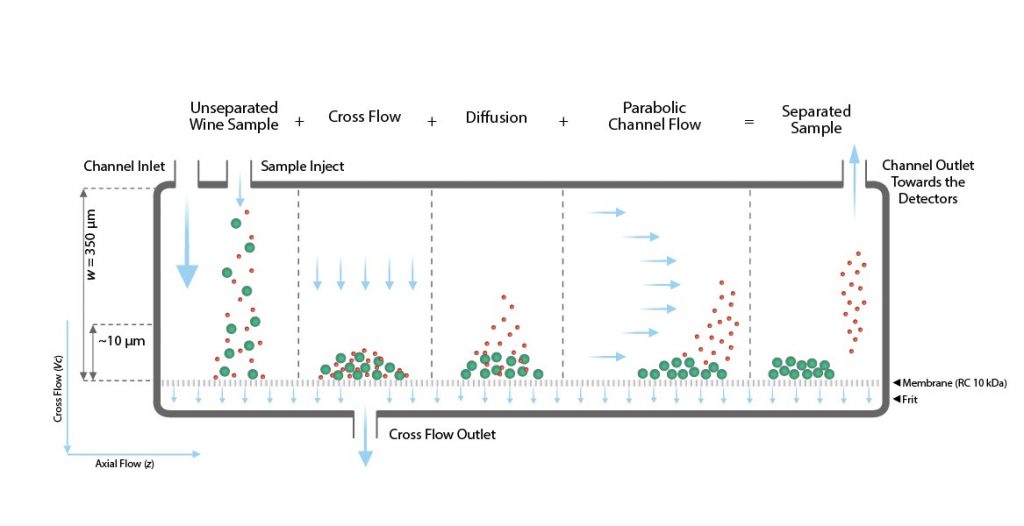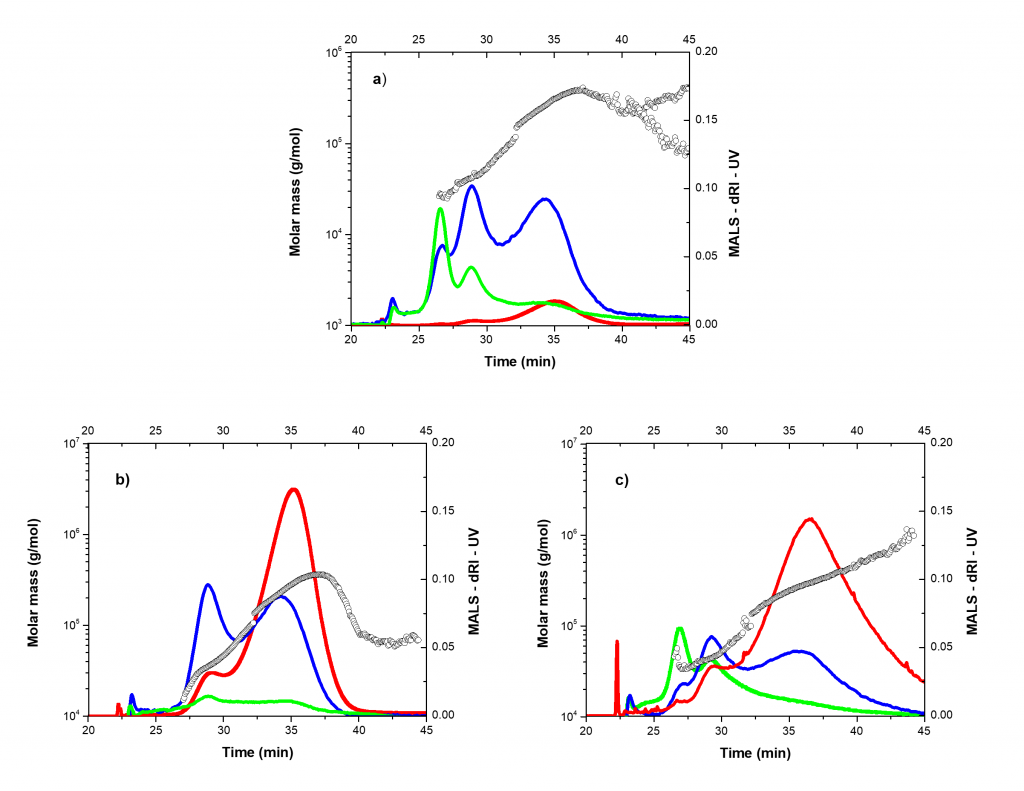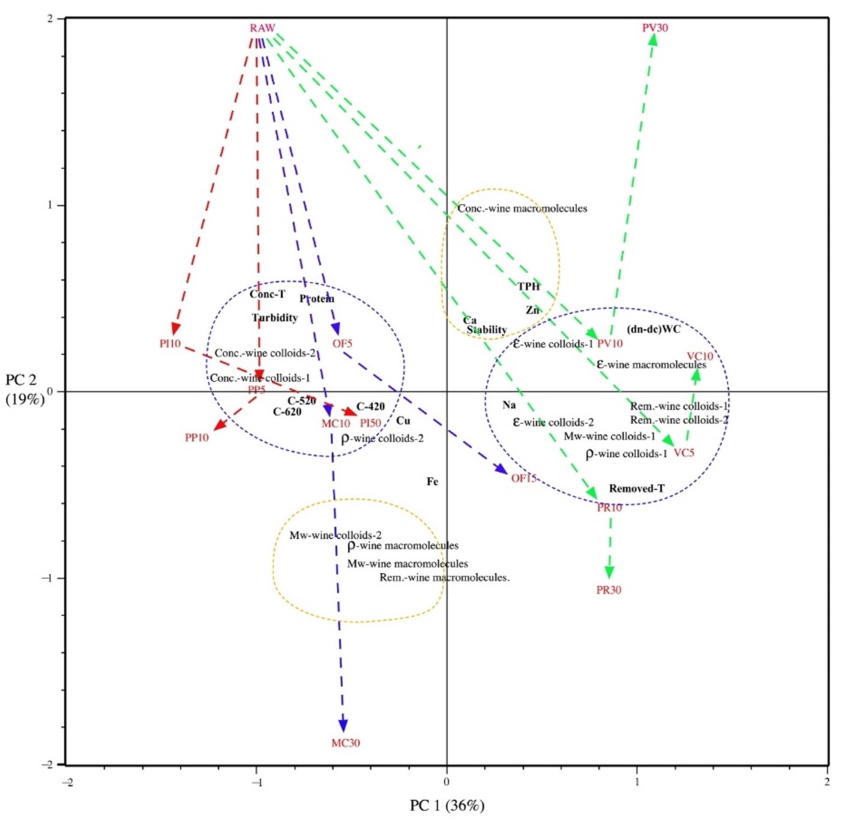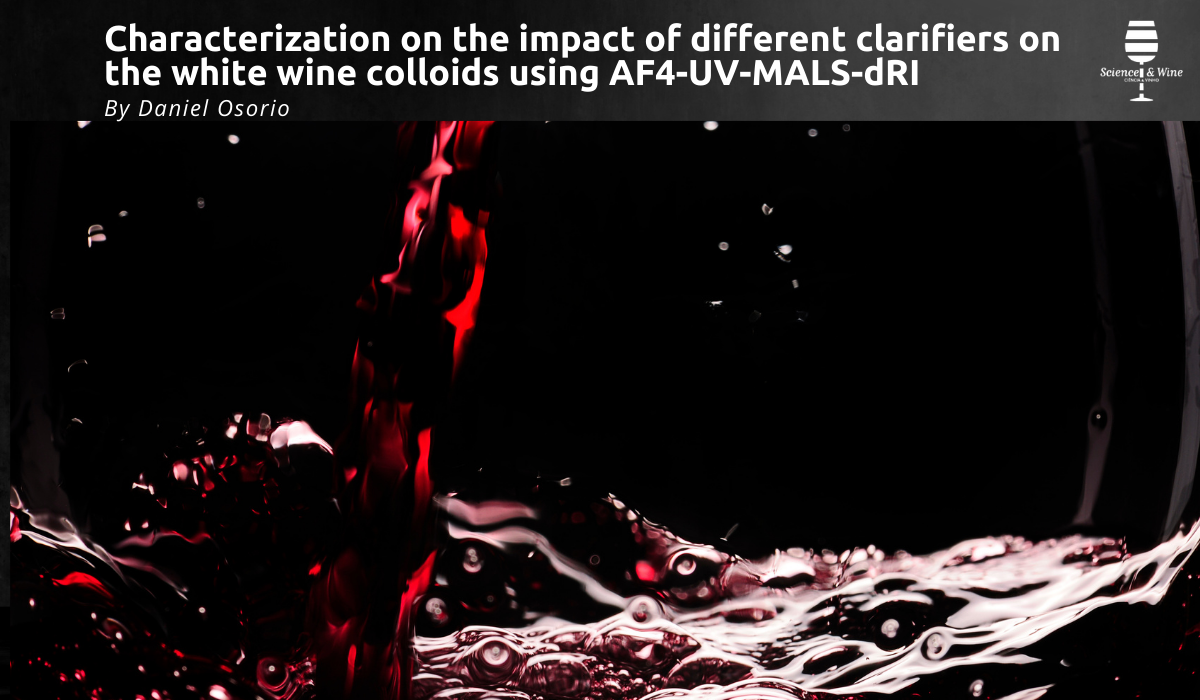By Daniel Osorio
Clarification in wines is a widely known and used process for the removal of undesirable substances which improves the clarity and stability of wines. For this process, processing aids called clarifiers are used. These clarifiers usually were mineral particles (clay), adsorbing the turbid and unstable material in the wine.
Currently there is plenty of interest in studying new types of clarifiers that may offer advantages on the organoleptic properties of the wine by being more selective in the removal and by adding less impurities to the wine.
Therefore, it is a need to develop new technologies that allow evaluating the removal character of these novel agents in relation to the colloidal and macromolecular properties of the wine.
Studies have recently been published on the use of Asymmetrical Flow Field-Flow Fractionation (AF4) for the characterization of colloids and macromolecules in wines[1]–[4] . However, these studies focused primarily on the ability of this technique to separate colloidal and macromolecular particles followed by an identification and quantification of the species that made up these larger complex compounds (See figure 1 for the illustrative process of the AF4 separation according to the diffusion coefficient of the analytes).

The advantage of the use the AF4 over other separative techniques is that the AF4 provides low cut rates minimizing shear degradation as well as low sample loss without altering the particle structure which may occur due to possible interactions during separation. Thereby, AF4 has been found to be an efficient technique to separate and characterize the wine colloids and macromolecules according to their hydrodynamic size.
In a recent study (https://doi.org/10.1016/j.foodchem.2022.132123) the removal efficiency of different clarifiers of different composition (mineral, synthetic, and vegetable) is evaluated during the clarification process of a white raw wine using AF4. In addition, the relationship of the colloidal and macromolecular characterization with properties such as turbidity, stability, color, protein, metal, and phenolic content is also investigated.
Comparing the results of the AF4 fractograms before and after the clarification process, clear differences are shown.

a) Raw wine, b) Activated bentonite and c) Potato Vegetal Protein[5].
The figure 2a refers to the raw wine before the fining treatment, due to the elution profile of the signals and the comparable high UV absorptivity, the two first populations are classified as wine colloids and the third, with a low UV absorptivity, as wine macromolecules. After the clarification process the populations can still be identified, however, the signal intensities are lower and the relations between to components are shifted. The figure 2b, the treatment using bentonite, display a UV signal (in green) of the two first populations that is strongly decreased while, in figure 2c, after treatment with potato protein as clarifier, the UV signal of the two first populations still remain comparable high although the 3 population has a much lower intensity. The blue line refers to the dRI signal which is reflecting the concentration and the red line is the light scattering signal reflecting concentration times molar mass. By comparing these signals, it is possible to extract information about the character of the molecules or aggregates of the different populations. It has been possible to identify the first two populations as consisting of small, compact, highly UV active particles, usually termed wine colloids. The third population consists of wine macromolecules that are loose, large molecules or aggregates with low UV absorptivity. From the angle dependence of the MALS signal particle size, determined as molar mass (Black dots ◌ in the fractograms) can be determined.
A PCA (Principal component analyses) was performed to correlate all the changes of the different parameters measured (See Figure 3). The figure shows the PCA biplot (loadings and scores) where it is possible to see that different clarifiers have grouped accordingly to their particular properties (follow the color of the arrows), above the RAW, in red the synthetic polymer, in blue the minerals and in green the vegetables proteins. It is possible to notice that each of the clarifiers display different properties, as for instance, the synthetic polymers clarifiers forms a cluster of comparable high total remaining concentration, a high concentration of proteins and a high concentration of population 1 and 2 that indicate a preserved concentration after the fining treatment. The mineral clarifiers shows removal of most of the colloidal and macromolecular material from the wine with pronounced effects on all parameters when applied at a high dose, while in low dose they seems to preserve the wine colloid fraction somewhat better than the macromolecular fraction. The protein clarifiers reduce parts of the colloidal fractions but preserving the phenolic content (comparable high UV absorptivity).

Thus, AF4-UV-MALS-dRI technique has been prove as a usefulness methodology that allows to characterize de colloidal and macromolecular material before and after the clarification process. In addition, the methodology allows for differentiate the doses used in the clarification in relation to the removal capacity and the relationship with standard properties with final impact in the wine quality.

Daniel Osorio M.
Ph.D. Student
Department of Food Technology, Engineering and Nutrition
Lund University
Box 124, SE-22100 Lund, Sweden
Reference Links
https://doi.org/10.2147/IJWR.S152026
https://doi.org/10.1021/acs.jafc.9b07251
https://doi.org/10.1016/j.foodchem.2022.132123
References
- C. Coelho et al., “Asymmetrical flow field-flow fractionation of white wine chromophoric colloidal matter,” Anal. Bioanal. Chem., vol. 409, no. 10, 2017, doi: 10.1007/s00216-017-0221-1.
- V. Marassi et al., “Characterization of red wine native colloids by asymmetrical flow field-flow fractionation with online multidetection,” Food Hydrocoll., vol. 110, p. 106204, 2021, doi: 10.1016/j.foodhyd.2020.106204.
- D. E. Osorio-Macías et al., “Fractionation of Nanoparticle Matter in Red Wines Using Asymmetrical Flow Field-Flow Fractionation,” J. Agric. Food Chem., 2020, doi: 10.1021/acs.jafc.9b07251.
- K. Pascotto, V. Cheynier, P. Williams, O. Geffroy, and F. Violleau, “Fractionation and characterization of polyphenolic compounds and macromolecules in red wine by asymmetrical flow field-flow fractionation,” J. Chromatogr. A, vol. 1629, p. 461464, 2020, doi: https://doi.org/10.1016/j.chroma.2020.461464.
- D. E. Osorio-Macías et al., “Characterization on the impact of different clarifiers on the white wine colloids using Asymmetrical Flow Field-Flow Fractionation,” Food Chem., vol. 381, p. 132123, 2022, doi: https://doi.org/10.1016/j.foodchem.2022.132123.

